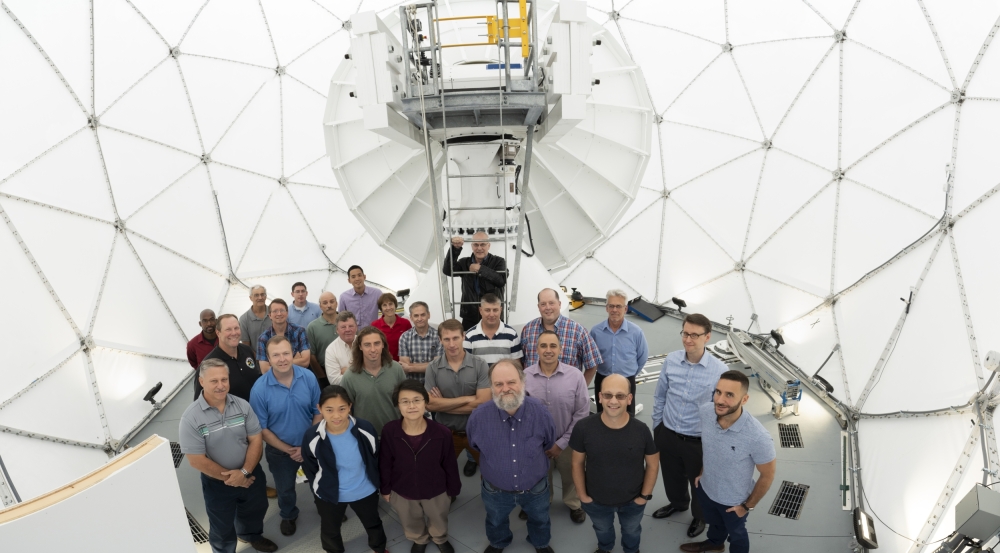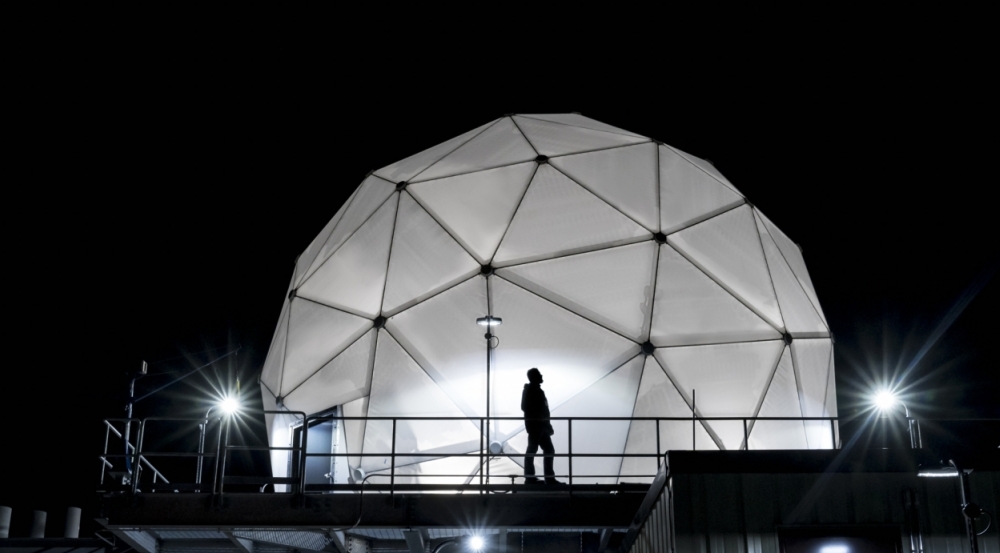Multi-Band Test Terminal

The MBTT — a 20,000-pound, 20-foot-diameter antenna — was installed in 2017 to enable the advancement of advanced satellite communications (SATCOM) technology. With its ability to rotate 15 degrees per second, completing a single revolution in 24 seconds, the MBTT can detect and track satellites in medium and low Earth orbit. The antenna can be easily reconfigured to transmit and receive signals over four commonly used radio-frequency bands for both military and commercial SATCOM that span frequencies from 7 GHz to 46 GHz: X, Ku, Ka, and Q. However, additional antenna feeds can be designed in the future to enable testing on other bands.
Since its installation, the MBTT has supported a wide range of experiments involving a new communications waveform, the protected tactical waveform (PTW), which is designed to provide highly secure, jamming-resistant communications. The MBTT was originally conceived as a test asset for PTW. The U.S. Space Force, through its Protected Anti-Jam Tactical SATCOM (PATS) mission area, is developing the capability to deliver PTW services over satellites owned and operated by the U.S. Department of War, and over satellites operated by commercial and international partners.

Besides PTW testing, the MBTT can serve as a test instrument to simulate different types of interference, from misconfigured users transmitting at the wrong frequencies to advanced jamming strategies. The MBTT has also supported research and development efforts associated with SATCOM interference mitigation and demonstration of resilient SATCOM architectures.
In the years ahead, Lincoln Laboratory looks forward to performing more testing with more user communities and international partners. As PTW reaches operational maturity, the MBTT, as a reference terminal, can support testing of vendors' systems. The MBTT can also contribute to early on-orbit checkout, measurement, and characterization of new military and commercial satellites as they reach orbit.